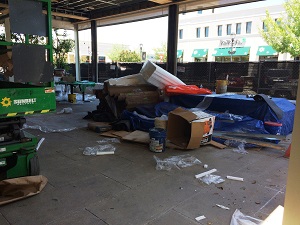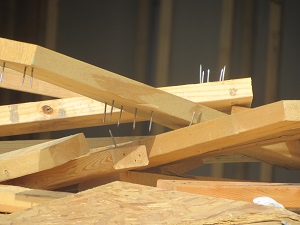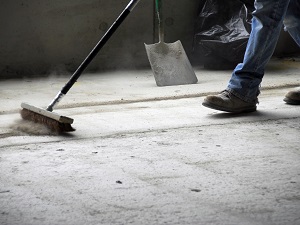Believe it or not, OSHA cares how neat and tidy you are on the job site. Messy projects mean the potential for OSHA poor housekeeping citations.

According to the U.S. Bureau of Labor Statistics, in recent years, there are more than 800 injuries annually involving floors, walkways, and ground surfaces. OSHA issues hundreds of citations to companies for violations of poor housekeeping and OSHA lists housekeeping on their top 100 most frequently cited list. Workers should do their part to help prevent injuries and incidents by practicing good housekeeping on every job and at every worksite.
Housekeeping should be a regular topic in safety meetings and the job supervisor will have the opportunity at the safety meeting to reinforce company policies on housekeeping and go over the OSHA standards that apply to that job site.
OSHA Construction Standard 1926.25(a) says that during the course of construction, alteration, or repairs, form and scrap lumber with protruding nails, and all other debris, shall be kept cleared from work areas, passageways, and stairs, in and around buildings or other structures.
OSHA General Industry Standard 1910.22(a)(1) All places of employment, passageways, storerooms, service rooms, and walking-working surfaces are kept in a clean, orderly, and sanitary condition.
OSHA General Industry Standard 1910.141(a)(3)(i) All places of employment shall be kept clean to the extent that the nature of the work allows.

OSHA Construction Standard 1926.252(c) All scrap lumber, waste material, and rubbish shall be removed from the immediate work area as the work progresses.
OSHA General Industry Standard 1910.22(a)(3) Walking-working surfaces are maintained free of hazards such as sharp or protruding objects, loose boards, corrosion, leaks, spills, snow, and ice.
Waste and scrap materials must be removed from the immediate work area to avoid creating trip and slip hazards where there is active work ongoing. Work areas must be kept clear as the work progresses. Pipe, conduit, rebar and any other material that can roll must be kept away from aisles and walkways to avoid creating trip hazards.
OSHA General Industry Standard 1910.22(a)(2) The floor of each workroom is maintained in a clean and, to the extent feasible, in a dry condition. When wet processes are used, drainage must be maintained and, to the extent feasible, dry standing places, such as false floors, platforms, and mats must be provided.
Use designated waste bins, recycle bins, and metal scrap containers. Entry ways, walk ways, and sidewalks should be kept free of water, ice, snow, and other potential trip, slip, or fall hazards.
OSHA Construction Standard 1926.252(a) says that whenever materials are dropped more than 20 feet to any point lying outside the exterior walls of the building, an enclosed chute of wood, or equivalent material, shall be used.
Designated waste bins, recycle bins and metal scrap containers must be used on site. When disposing of waste or materials on a multi-story construction site, chutes or designated drop-off zones must be used to avoid possible fall or struck-by hazards.
OSHA Construction Standard 1926.252(b) says when debris is dropped through holes in the floor without the use of chutes, the area onto which the material is dropped shall be completely enclosed with barricades not less than 42 inches high and not less than 6 feet back from the projected edge of the opening above. Signs warning of the hazard of falling materials shall be posted at each level.


.jpg)
